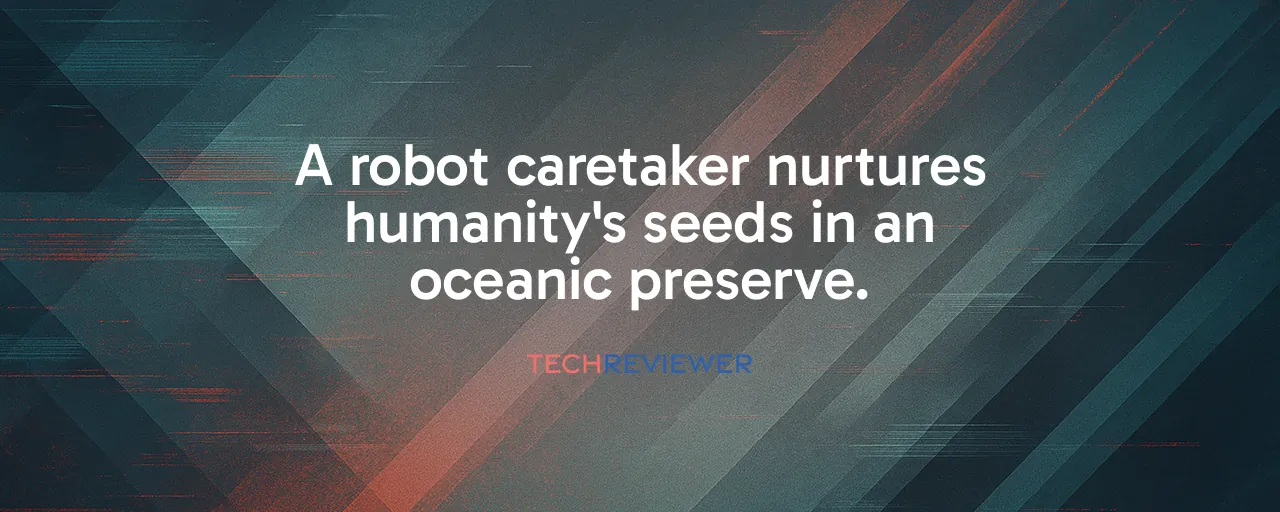A New Kind of Survival Adventure
The Last Caretaker, launched in Early Access on November 6, 2025, invites players into a sci-fi world where survival isn't about outlasting enemies or grinding resources. Instead, you're a lone robot caretaker, tasked with tending to humanity's final hope in a sprawling oceanic preserve. Developed by Channel37, a small Helsinki-based studio, the game offers a quieter mission: nurturing human seeds for a space-bound future. It presents a distinct direction in a genre often defined by tension and competition.
The game emphasizes narrative depth and environmental care. Players explore a vivid ocean world, managing resources and upgrading machines while unraveling the story of a faded humanity. The $34.99 price tag, with a 10% launch discount, positions it as a premium indie experience, available on both Steam and Epic Games Store. Its top-50 ranking at Steam's Next Fest in 2025 shows players are hungry for this fresh approach.
Crafting With Purpose
At its core, The Last Caretaker is about meaningful choices. Every crafted item, from cables to machines, ties directly to the story, pushing you to explore the world's secrets. Channel37's team, with veterans from Ubisoft RedLynx and Mind Echoes, built a system where resource management feels weighty but never punishing. The game's physics-driven cables and water simulations create a living, breathing ocean that's as much a character as the robot you play.
The narrative unfolds through artifacts and environmental clues, not cutscenes. Some players might find the open-water navigation tricky, as the vast scale can feel disorienting without clear waypoints. That freedom fuels discovery, rewarding those who dive into the game's mysteries at their own pace.
Lessons From Indie Successes
The Last Caretaker draws inspiration from indie hits like Stardew Valley and Spiritfarer, both of which carved out space in crowded markets. Stardew Valley, with over 41 million sales, thrived by fostering community through relaxed farming and heartfelt stories. Its success came from word-of-mouth and content creators on Twitch and YouTube, a path Channel37 is following with active Discord engagement and streamer partnerships.
Spiritfarer, another touchstone, wove environmental themes into crafting, earning praise for its emotional weight. The Last Caretaker mirrors this by making conservation a core mechanic, appealing to players who value ecological narratives. Unlike Stardew's cozy farms or Spiritfarer's afterlife ferry, Channel37's oceanic setting offers a unique canvas, though its small team faces challenges in scaling updates as player counts grow.
Riding the Cozy Gaming Wave
The game taps into a booming market, with cozy gaming valued at $973 million in 2024 and projected to hit $1,473 million by 2032. This surge reflects a shift among players, especially working professionals, toward low-stress experiences. The Last Caretaker caters to this crowd with its 30-45 minute play sessions, perfect for unwinding after a long day. Its lack of time-pressure mechanics or aggressive monetization feels like a breath of fresh air in a market crowded with battle passes.
Fans of high-octane survival games might see the relaxed pace as a departure from genre norms. Channel37 counters this by doubling down on emotional engagement, banking on players who want story over struggle. The game's accessibility, with low skill barriers, also opens the door to non-core gamers, including neurodivergent players and older audiences.
A Blueprint for Indie Ambition
Channel37's launch strategy, backed by Supercell, shows indie studios can play big. Releasing simultaneously on Steam and Epic Games Store maximizes visibility in a crowded market, a move made possible by Epic's 0% revenue cut for games under $1 million in earnings. This approach echoes Crashlands, which proved small teams can handle multi-platform launches without spreading themselves thin.
The Last Caretaker's early access model also keeps players in the loop, with promised updates like new vehicles and expanded lore. However, the seven-person team might struggle to juggle bug fixes and community feedback if the game's popularity spikes. Still, their commitment to player agency and narrative depth sets a high bar for what indie games can achieve when they prioritize heart over hype.
